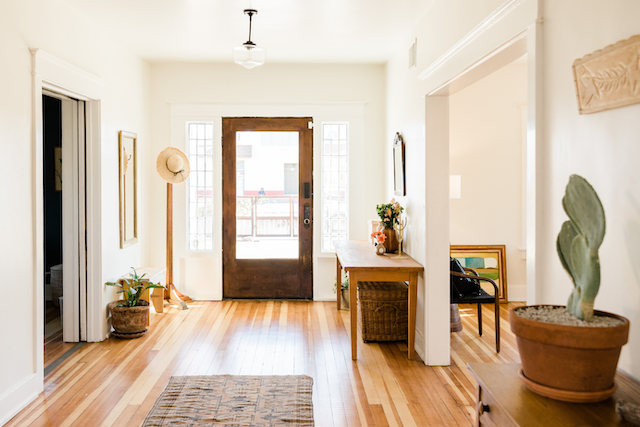
Termites are a common pest in Singapore, thanks to the hot, humid climate that these wood-destroying insects thrive in. Left unchecked, termites can cause severe damage to homes. Prevention is key, and homeowners can take several proactive steps to protect their properties. Below are some effective termite prevention tips tailored for homeowners.
1. Manage Moisture Around the Home
Singapore’s tropical climate, characterized by frequent rains and high humidity, provides ideal conditions for termites. Moisture control is essential to prevent termites from flourishing. Ensure that any water pooling near your home is promptly addressed. Regularly check for leaks in pipes, taps, and air-conditioning units, as even small drips can create the damp environment that termites prefer.
Additionally, ensure proper ventilation in areas like basements and attics. Using dehumidifiers or exhaust fans can help reduce moisture, making these spaces less attractive to termites.
2. Inspect and Maintain Wooden Structures Regularly
Wooden components such as door frames, window sills, and flooring are often targeted by termites. Conduct regular inspections of these wooden elements, especially in older HDB flats, condos, and landed properties. Look for signs of termite activity, such as hollow-sounding wood, bubbling paint, or mud tubes on walls. If any signs are detected, it is crucial to address the issue immediately by consulting a professional termite pest control service.
3. Invest in Anti-Termite Treatments During Construction
For homeowners building new properties or undergoing major renovations, consider investing in pre-construction termite treatment. This involves applying a termiticide to the soil before laying the foundation. It acts as a chemical barrier that prevents termites from entering the structure from below. This is a common practice, particularly for landed properties, as it offers long-lasting protection against termite infestations.
4. Use Physical Barriers for Added Protection
In addition to chemical barriers, physical barriers are an effective measure in termite prevention. Stainless steel mesh and crushed granite barriers can be installed during construction to block termite entry points. These barriers are highly durable and environmentally friendly, making them a suitable option for homeowners looking to safeguard their properties without using chemicals.
5. Maintain Proper Landscaping Practices
While it may not be about removing dead trees and stumps, managing the landscape around your home is essential. Ensure that soil does not cover wooden structures like exterior walls or wooden decks, as this can provide a hidden pathway for termites. When planting trees or shrubs, keep them a safe distance from the house. Termite nests can often form near tree roots, and branches or leaves touching the house can serve as a bridge for termites to enter.
6. Minimize Wood-to-Ground Contact
Wood-to-ground contact is a direct invitation for termites. Use concrete, metal, or other non-wood materials as a base for outdoor structures like garden beds or patios. For wooden structures, ensure they are raised and not directly touching the soil.
7. Regular Monitoring with Termite Bait Systems
Implementing termite baiting systems is a highly effective preventive strategy used widely. These baiting stations are placed around the property and monitored regularly for termite activity. When termites consume the bait, they carry it back to their colony, eventually eliminating the entire nest. This method is especially popular in condos and landed properties, as it provides a continuous monitoring solution.
8. Professional Annual Inspections
Given the high termite risk in our humid environment, annual professional inspections are recommended for all types of properties, including HDB flats, condominiums, and landed homes. Pest control experts can detect early signs of infestations that homeowners might miss, such as mud tubes, termite droppings (frass), and damaged wood. Early detection is key to preventing extensive damage and costly repairs.
9. Use Termite-Resistant Materials
For renovations and new builds, consider using termite-resistant materials. Options like treated timber, concrete, and steel are common choices. Treated timber is infused with chemicals that deter termites, making it a more durable option for wooden structures. Additionally, using materials like fiber cement boards for walls can help minimize the risk of termite damage.
10. Ensure Proper Waste Management
Improperly managed waste, especially wooden debris or paper products, can attract termites. Ensure your surroundings are free of clutter, especially in areas like storage rooms or basements where termites might find food and shelter.
Conclusion
Termites are a significant threat to homes due to the conducive climate and environment. By taking preventive measures such as controlling moisture, using termite-resistant materials, and scheduling regular inspections, homeowners can effectively safeguard their properties. Engaging a reputable pest control service can provide peace of mind and help address any issues before they escalate into severe infestations.
Implementing these tips can help you protect your home from termite damage, saving you from costly repairs and ensuring the longevity of your property. Stay vigilant, as early detection and preventive care are the best strategies against these silent destroyers.
